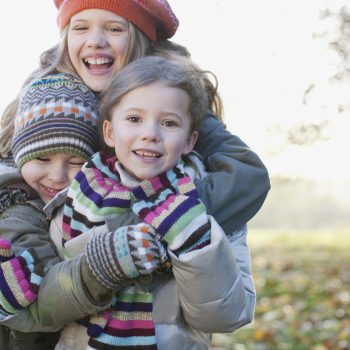
‘Tis the season for head lice in kids. Now that the weather is getting colder, kids are bundling up to go outside and to school, and hats are a big part of staying warm. While it’s best to wear a hat in the winter, kids shouldn’t share their hats due to live head lice that can easily spread through contact like sharing headwear, other means of transmission include kids huddled together in the classroom, coats piled together, or sleeping bags/pillows near each other during sleepovers.
Misconceptions
While many people think head lice are correlated with a child’s environment and/or hygiene, this is not the case. According to the Centers for Disease Control and Prevention (CDC), head lice is most common among preschool- and elementary school-age children and their guardians and not related to cleanliness.
What are they?
Head lice are tiny, wingless, parasitic insects that live among human hairs and feed on tiny amounts of blood drawn from the scalp. Lice are common in school-aged kids and are highly contagious. They are annoying and sometimes tough to get rid of, but they aren’t dangerous. While lice make children’s scalps itchy, they don’t spread a disease and they won’t make your kid sick.
What should I look for?

You can see head lice with the naked eye. Although they are very small, sometimes you can see them in your child’s hair without searching for them. You may notice lice eggs (called nits), which are tiny yellow, tan or brown dots or eggs that have yet to hatch. When lice eggs hatch, they become nymphs (baby lice) or adult lice. These are no bigger than a sesame seed and are grayish-white or tan.
If you don’t spot the lice in their hair, you may notice your child itching and scratching their scalp intensely. This is another sign that they have head lice. However, scratching may not be the first sign. Sometimes children feel things moving around or tickling their scalps. If their scratching intensifies, you may notice small red bumps or sores on their scalp from itching.
Treatment
You should call your doctor if your child has head lice. They will recommend a medicated rinse or lotion to kill the lice; however, if your child is 2 months old or younger, you should not use medicated lice treatments. Your child’s primary care provider can recommend a treatment based on your child’s age and the age and resistance of the lice.
You can also try to remove the lice by hand. To do this, wet and condition your child’s hair and use a fine-toothed comb to get the lice off the scalp.
It’s important to rid your house of lice and their eggs as they can live up to two days off the scalp.
Here are some ways to get rid of lice and their eggs around the house:
- Check everyone in the house for lice and get treatment as necessary.
- Wash all bed linens and clothing in very hot water, then put them in the hot cycle of the dryer for at least 20 minutes.
- Dry clean any clothing, bed linens, and stuffed animals that aren’t machine washable.
- Vacuum carpets and any cloth-covered furniture in your home or car.
- Discard hair-care items or soak them in rubbing alcohol for 1 hour, then wash them in hot soapy water.
- Instead of washing or dry cleaning, another strategy is to put all infested items in a tightly-sealed plastic bag for two weeks to a month to kill the lice.
Remember, head lice are very common in school-age children, but it is possible to prevent the spread of lice. If you receive a notice from school or daycare that a child has lice, perform inspections daily on your child. For anyone with long hair, tying hair back or braiding hair can be helpful. This winter, be sure to talk to your child about the importance of not sharing hats and other head-touching items like combs or scarves, keeping their coats or other warm clothes separated from others (if possible) and ensuring that during sleepovers they have a bit of space to separate their bedding from others.